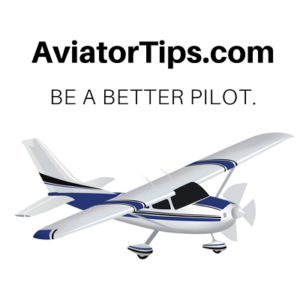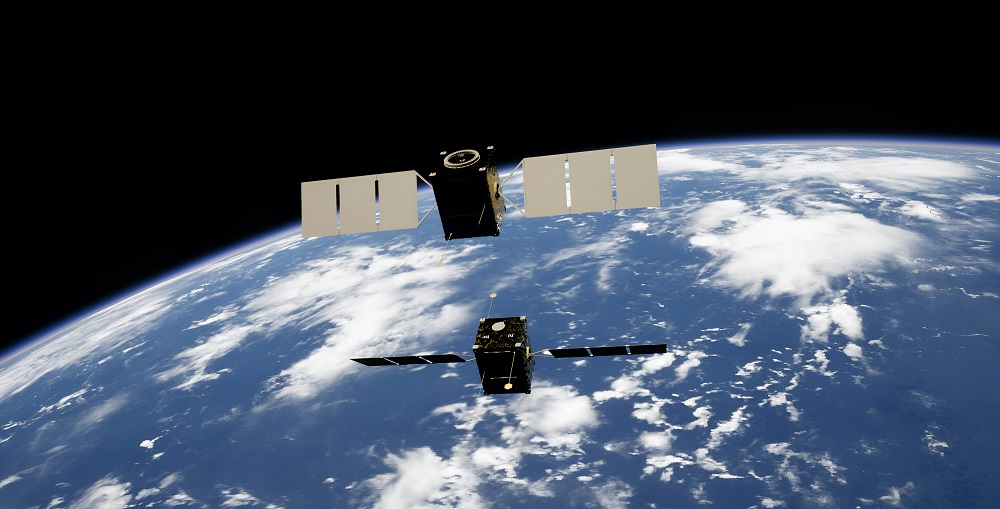The way pilots navigate the skies is undergoing a major transformation. For decades, aviation relied on a network of ground-based navigation aids like VORs, NDBs, and ILS systems. These provided the backbone of enroute and approach navigation. But now, satellite-based navigation is rapidly becoming the new standard.
Whether you’re a student pilot just starting your cross-country training or a new private pilot looking to expand your knowledge, understanding this shift is essential. Satellite systems like GPS and WAAS (Wide Area Augmentation System) offer greater precision, flexibility, and coverage. They’re changing the way pilots plan, fly, and approach airports. And they’re here to stay.
How GPS and WAAS Are Reshaping the Way Pilots Navigate the Skies
A Quick Look at Traditional Ground-Based Navigation
Before we dive into satellite navigation, it helps to review the systems pilots have relied on for years:
1. VOR (VHF Omnidirectional Range)
- Provides bearing information from a fixed ground station
- Pilots tune a VOR frequency and navigate to or from the station
- Often used with DME (Distance Measuring Equipment)
2. NDB (Non-Directional Beacon)
- Older technology using low-frequency signals
- Works with the aircraft’s Automatic Direction Finder (ADF)
- Less precise than VOR and fading from use
3. ILS (Instrument Landing System)
- Provides precise lateral and vertical guidance to a runway
- Used for instrument approaches in low visibility
- Expensive to maintain and limited to select runways
These systems required infrastructure at specific locations. If a station went down, a route or approach might no longer be available. Terrain and distance also affected signal strength and accuracy.
The Shift to Satellite-Based Navigation
Now let’s look at how satellite navigation is taking over.
1. GPS (Global Positioning System)
- Provides accurate position data worldwide using a constellation of satellites
- Gives pilots real-time latitude, longitude, altitude, and ground speed
- Works everywhere with a clear view of the sky
- Doesn’t rely on local infrastructure
GPS has become the standard navigation method for most general aviation flights. It is especially valuable in remote or mountainous areas where VOR or ILS coverage is weak or unavailable.
2. WAAS (Wide Area Augmentation System)
- Enhances GPS accuracy, integrity, and availability
- Corrects GPS signals using ground reference stations and geostationary satellites
- Supports precision approaches called LPV (Localizer Performance with Vertical Guidance)
WAAS allows pilots to fly instrument approaches at airports that do not have ILS, providing vertical guidance with similar minimums. This is a major upgrade in capability, especially for smaller airports.
Benefits of Satellite-Based Navigation
1. Greater Accuracy
WAAS-enabled GPS can pinpoint your position to within a few meters. This is far more accurate than traditional VOR navigation, which could leave your position uncertain by several miles.
2. Broader Coverage
Ground-based systems are limited to line-of-sight or specific regions. GPS works anywhere on Earth, from big cities to backcountry airstrips.
3. More Approaches Available
Thousands of airports now have GPS-based approaches, including LPV and LNAV/VNAV procedures. This expands access to more runways in more locations, especially those without the infrastructure for ILS.
4. Improved Efficiency
GPS allows for direct routing instead of flying from one ground station to another. This means shorter flight paths, reduced fuel consumption, and fewer course changes.
5. Enhanced Safety
With satellite navigation, pilots can avoid terrain and obstacles more easily. Systems like synthetic vision, terrain awareness, and glide range rings all rely on GPS input to help pilots maintain situational awareness.
Understanding RNAV and RNP
Satellite navigation makes two concepts possible that every pilot should understand:
RNAV (Area Navigation)
- Allows aircraft to navigate directly between any two points, not just over ground stations
- Common in GPS-based enroute and terminal procedures
- Used in both VFR and IFR flying
RNAV routes are designated with a “T” (for terminal) or “Q” (for high altitude) on IFR charts. Even VFR pilots benefit from the flexibility of RNAV-enabled flight planning.
RNP (Required Navigation Performance)
- A subset of RNAV with onboard monitoring and alerting
- Provides guaranteed navigation accuracy (for example, 0.3 NM)
- Required for some advanced instrument procedures in complex airspace
While RNP is mostly used in commercial and airline operations today, understanding the concept is important for any pilot transitioning into IFR flying or more advanced equipment.
What About the VOR MON Program?
The FAA recognizes that not all aircraft are GPS-equipped, and satellites can experience outages. To ensure a basic level of navigation, the VOR MON (Minimum Operational Network) program is preserving a core set of VORs across the country.
The goal is to:
- Provide a backup for GPS outages
- Allow VFR and IFR aircraft to navigate to a safe landing location
- Retain coverage near major airports and along airways
While hundreds of VORs are being decommissioned, the remaining network ensures that basic navigation will still be possible in a GPS-denied environment.
Satellite-Based Approaches: What You Need to Know
As a private pilot, especially if you plan to pursue an instrument rating, understanding GPS-based approaches is essential.
Types of GPS approaches include:
LPV (Localizer Performance with Vertical Guidance)
- Mimics an ILS with lateral and vertical guidance
- Minimums can be as low as 200 feet AGL
- Requires WAAS-enabled GPS
LNAV/VNAV (Lateral Navigation / Vertical Navigation)
- Provides both lateral and vertical guidance
- Slightly higher minimums than LPV
- Can be used with WAAS or baro-VNAV systems
LNAV (Lateral Navigation Only)
- Lateral guidance without vertical guidance
- Higher minimums but available at many airports
LP (Localizer Performance)
- Lateral-only precision for runways where LPV or ILS is not possible
The more advanced your avionics and GPS equipment, the more approach options you will have.
Practical Impacts on Student and Private Pilots
1. Easier Cross-Country Navigation
GPS and EFB apps let you build flight plans quickly and fly direct routes. No more plotting courses between VORs or checking for radials and DME.
2. Expanded Access to Airports
Even small airports now offer RNAV approaches, making it easier to complete instrument training and fly to more destinations under IFR.
3. Reduced Equipment Requirements
Many new aircraft are being equipped with GPS and WAAS but without traditional ADF or even VOR receivers. While it’s still important to understand legacy systems, GPS is becoming the primary navigation method.
4. Increased Self-Reliance
With GPS, you can navigate independently of ground stations. This is especially helpful in rural areas or during emergencies when ground-based services might not be available.
Challenges and Considerations
While satellite navigation offers many benefits, it’s not without its challenges:
1. GPS Outages
- Satellite signals can be disrupted by solar activity or interference
- Always have a backup plan and maintain visual navigation skills
2. Overreliance on Automation
- Learn to fly without the magenta line
- Practice pilotage and dead reckoning occasionally
- Stay sharp on fundamental skills
3. Equipment Familiarity
- GPS systems vary between aircraft
- Know how your system works, how to enter flight plans, and how to activate approaches
4. Regulatory Knowledge
- Understand RAIM (Receiver Autonomous Integrity Monitoring) if you are flying IFR without WAAS
- Review NOTAMs for GPS outages or WAAS testing events
Final Thoughts
The transition from ground-based to satellite-based navigation is one of the biggest shifts in aviation in decades. It’s making flying safer, more efficient, and more accessible, especially for general aviation pilots.
As a student or new private pilot, learning how to use GPS and understanding its role in modern navigation will make you a more capable and confident flyer. While it’s still important to know how to use VORs and fly without automation, satellite navigation is the present and future of flight.
Stay current with your equipment, build your knowledge, and embrace the benefits that satellite navigation brings to the cockpit.
Sources:
– FAA: *Satellite Navigation Programs*
– FAA: *VOR MON Overview*
– Garmin: *Understanding WAAS and GPS Approaches*
– AOPA: *GPS Navigation in General Aviation*
– FAA Instrument Flying Handbook
Recent Posts
FAA MOSAIC Final Rule: What Pilots, Manufacturers, and the Aviation Community Need to Know
Learn how the FAA’s MOSAIC final rule revolutionizes Light-Sport Aircraft certification, expands Sport Pilot privileges, and reshapes general aviation. See what’s changing, when it takes effect,...
Student Pilot Insurance: Essential Coverage for Aspiring Flyers
Discover how student pilot insurance can protect your flying dreams. Get expert tips and coverage options to ensure your safety and peace of mind.


